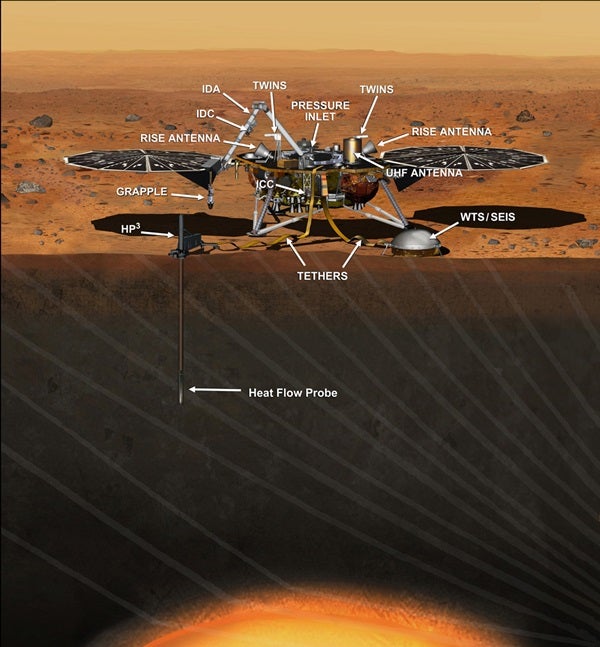The importance of rotation is that it organizes the convective motion into cylindrical eddies aligned with the rotational pole. Thus, the fields generated by the rotation of these eddies throughout the core tend to line up in the same direction, adding together to form a strong dipole field. Without rotation, the convection would produce random eddies whose individual fields would be small and tend to cancel each other out.
This explains why the slow rotation of Venus would preclude a magnetic field. But what about Mars, which rotates nearly as fast as Earth and is known to have an iron core? First, the core may have cooled enough to have completely solidified; a spinning ball of solid iron doesn’t produce a magnetic field.
However, there is other evidence that Mars’ core is at least partly liquid. The more likely explanation is that convection in the liquid core has slowed to the point that it can’t sustain a dynamo. This might be due to the core’s heat being efficiently removed through the mantle early in Mars’ history, resulting in a relatively cool core that still may be hot enough to be molten.
Or, paradoxically, it may be due to inefficient heat loss from the mantle. This would cause the mantle to stay hot, which would increase the temperature at the top of the core. Since thermal convection is driven by the difference in temperature between the top and bottom of the fluid, this would be equally effective in stopping convection, and thus shutting down the magnetic field-producing dynamo.
InSight principal investigator
Jet Propulsion Laboratory
Pasadena, California










